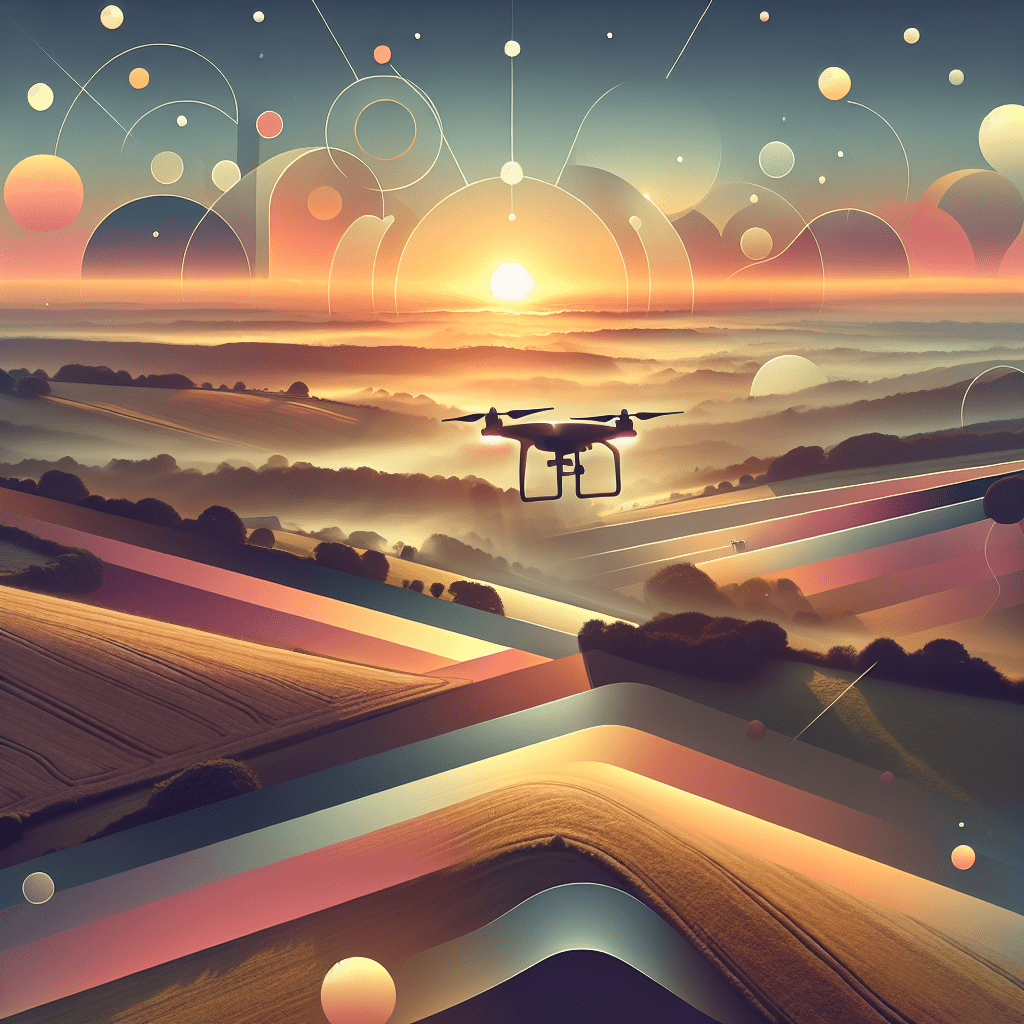Optimal Flying Times: Drone Lighting & UK Rules Guide
In This Article
- Early morning and late evening offer the most favourable light and wind conditions for drone flights.
- Golden and blue hour both provide ideal lighting, depending on your creative aims.
- Check weather conditions and airspace restrictions each time you prepare for a flight.
- VLOS is legally required in the UK—only fly when you can clearly see your drone unaided.
- Use planning apps and tools to determine your region’s optimal flying windows.
- Avoid urban settings during peak foot traffic to meet safety and privacy laws.
- Equip your drone with LED lights if planning to fly during low-light or night-time conditions.
- Each season offers different flying challenges—adapt your schedule accordingly.
Why Flying Time Matters for Drone Photography
Lighting, Shadows & Visual Impact
The concept of Optimal Flying Times is not simply a matter of preference—it’s a pivotal factor that influences every aspect of drone photography. Ideal lighting, minimal atmospheric disturbance, and legal constraints together define when and how you should fly your drone. Whether you’re capturing sweeping landscapes or intricate architectural shots, the time of day drastically affects image sharpness, colour balance, and shadow depth.
In particular, natural light plays a profound role. The angle of sunlight changes throughout the day, affecting exposure, shadows, and reflections. During midday, light tends to be harsh and flat, often washing out textures and details. However, during the golden hour—shortly after sunrise and just before sunset—the sun casts a soft, warm glow that enhances depth and contrast. This brief window offers optimal illumination for aerial photography.

Shadows are also longer and more pronounced during golden hour, adding dimensionality and mood to your shots. Conversely, blue hour—the brief period before sunrise and after sunset—offers a cooler tone and soft ambient lighting, lending a cinematic quality to landscapes and cityscapes. Thus, understanding and leveraging these natural phenomena is key to mastering drone photography in the UK.
The Benefits of Early Morning Flights
Calm Winds & Golden Light
Early morning is widely regarded as one of the Optimal Flying Times in the UK. This is primarily due to two advantages: calmer wind conditions and the availability of golden hour lighting. Typically, wind speeds are lower in the morning, especially around dawn. This allows for more stable flights and, crucially, less motion blur in footage and images. Drones are highly sensitive to gusts, and early hours present ideal flying conditions for achieving smooth aerial movements.
“Early flights reduce environmental interference and capture serenity that’s often lost later in the day.”
From a lighting standpoint, the morning golden hour paints landscapes with a rich, golden hue. These conditions are particularly conducive to photographing forests, rolling hills, and coastal areas. With the sun low on the horizon, you achieve dynamic contrasts between highlights and shadows, enhancing depth and realism in your visuals. Moreover, during morning hours, the world is quieter—fewer pedestrians, minimal traffic, and less radio interference, creating a hassle-free environment for drone operators.
Golden Hour vs Blue Hour: Which is Better?
Comparing golden hour to blue hour is a subjective consideration, often influenced by the intended output of your drone footage or photos. Golden hour’s warm, golden tones give your images a romantic, vibrant quality—perfect for promotional content, tourism shoots, or nature-focused videography. Shadows are longer, and the contrast between light and dark is starker, ideal for drama and mood setting.
Meanwhile, blue hour is characterised by soft, scattered light filled with cool blue and purple tones. The diffuse lighting helps to minimise harsh shadows and lends itself beautifully to urban scenes, architecture, and twilight skies. If you’re aiming for a cinematic, almost ethereal feel, blue hour might be your optimal flying time.
In essence, neither is “better”—rather, each serves a different artistic narrative. The choice depends on the emotional response you aim to evoke. For versatility, it’s advisable to explore both timeframes and adjust your drone settings accordingly.
Legal Guidelines: UK Drone Flight Time Rules
Regulatory compliance is essential when determining your Optimal Flying Times. In the UK, drone operations are governed by the Civil Aviation Authority (CAA). According to CAA rules, both hobbyist and commercial pilots must adhere to limitations around Visual Line of Sight (VLOS), airspace restrictions, and time of operation.
While there is no nationwide curfew prohibiting night flying, drone pilots must be especially cautious during reduced visibility hours. The CAA mandates that flights must ensure visibility of the drone at all times. Night-time operations therefore require special planning, such as incorporating LED lights on your drone and informing local authorities when conducting commercial flights. You should regularly consult Learn more about Drone Navigation Tips & Regulations in the UK for updates on the UK drone code.
Night Flying in the UK: What the Law Says
Under UK legislation, flying your drone at night is permissible, but it comes with stringent safety protocols. The main concern is the limitation of visibility, not only to you as the operator but also to others who may be unaware of the drone’s presence. As part of setting your Optimal Flying Times, consider that drones equipped with FAA-compliant anti-collision lighting are recommended for night operations.
Night flying should be avoided in urban spaces unless necessary. Light pollution can distort your imaging sensors and make accurate manual control difficult. Furthermore, you should never fly over congested areas or near airports during night hours. Always check Official CAA drone guidance for UK pilots to remain informed about temporary restrictions and airspace updates.
Weather Factors: Wind, Rain & Visibility
Perhaps the most unpredictable element in planning Optimal Flying Times is the weather. The UK’s variability in weather conditions means that pilots must monitor forecasts rigorously before every flight. Wind is the most consistent hazard. Gusts over 15 mph can destabilise drones, particularly lighter models, making them prone to drift or even crash. Windy afternoons should generally be avoided.
Rain is a frequent concern. Most consumer drones are not waterproof and are susceptible to internal damage if moisture penetrates the housing. Flying during drizzle or fog is highly discouraged unless the drone is purpose-built for adverse environments. Visibility is a legal and practical requirement. If you cannot see your drone with the naked eye, you’re breaching CAA guidelines and risking legal penalties. Thus, always choose times of day with clear skies and low wind forecasts, especially during winter months where weather changes swiftly.
Best Times by Season: Summer vs Winter Flights
The concept of Optimal Flying Times varies significantly between summer and winter. In summer, longer days provide an extended golden hour, often between 4:30 am–6:00 am and 7:30 pm–9:30 pm. These periods offer ample time to set up flights, adjust settings, and capture a broad range of angles under ideal lighting conditions.
However, mid-summer also brings increased user traffic in parks, beaches, and public spaces. This could complicate VLOS and compromise flight safety. In contrast, winter’s shorter days restrict your window of opportunity. Sunrise might occur at 8:00 am and dusk could settle by 4:00 pm, drastically condensing available flying time. Not only that, but low sun angles in winter exaggerate shadows, which may either enrich your shots or create unwanted glare, depending on how you frame the camera.
Ultimately, each season offers unique advantages. Thorough scheduling and location scouting based on the season’s limitations will ensure you select the appropriate time to fly.
VLOS & Lighting Requirements for Flights
Maintaining Visual Line of Sight (VLOS) is a non-negotiable requirement in UK drone law and a controlling factor for Optimal Flying Times. Essentially, you must keep your drone visible without the use of aids such as binoculars or FPV goggles, except under specific exemptions. This rule limits operations during fog, dusk, or poor lighting conditions unless proper planning and lighting accessories are used.
Flying during twilight or evening hours necessitates auxiliary lighting on your drone. It’s advisable to equip your aircraft with both front-facing and bottom-mounted LEDs for improved orientation and location tracking. In addition, always consider how ambient environmental lighting, such as streetlamps or car headlights, might interfere with your ability to monitor the aircraft visually.
Safe Drone Heights and Urban Restrictions
Understanding height limitations and exclusion zones is important when deciding your Optimal Flying Times in urban areas. In the UK, drones must not fly higher than 120 metres above ground level. This restriction is critical in built-up environments, where the risk of interference with manned aircraft significantly increases.
Moreover, drones may not be flown within 50 metres of people, vehicles, or property not under the pilot’s control. During popular times of day—like lunchtime in city centres or weekends in parks—foot traffic spikes, making it tricky to maintain safe distances. Flying outside rush hours, particularly in the early morning or late evening, enhances spatial control over your flight zone.
As such, using drone geofencing features and consulting Read a related article can help you understand when and where it’s safest to launch, especially in populated areas.
Flight Planning Tools & Apps to Use
Incorporating technology into your planning strategy can further refine your choices of Optimal Flying Times. Several UK-specific apps are available to assist in determining when and where to fly. Tools like Drone Assist by Altitude Angel provide real-time data on airspace restrictions, nearby hazards, and planned flight zones.
Other applications, such as UAV Forecast or Windy, include detailed weather breakdowns that show expected wind speed, cloud cover, and the timing of sunlight transitions. Additionally, GoldenHour.One and Sun Surveyor assist in plotting sun location and duration of golden and blue hour windows, helping visual artists plan around the day’s most flattering light.
Using a combination of these tools ensures that each flight is purpose-driven, legally compliant, and primed for capturing high-quality content.
Conclusion: Choose the Right Time for a Safe Flight
[CONCLUSION_CONTENT]
Great guide on best-time-of-day-to-fly-your-drone-in-the-uk – Community Feedback
What is the best time of day to fly a drone?
The best times are early morning or late evening on sunny days, when lighting and shadows are most impressive and winds are usually calmer.
Is it legal to fly a drone at night in the UK?
Yes, provided you follow CAA rules, maintain visual line of sight (VLOS), and ensure your drone is always visible in its environment.
What time of day can you fly a drone?
You may fly during daylight hours recreationally, and at night if your drone is properly equipped with required lights and you can see it at all times.
What are the new rules for drones in the UK?
Key rules: Your drone must weigh under 25kg, stay below 400ft (120m), and be kept within Visual Line of Sight (VLOS).

